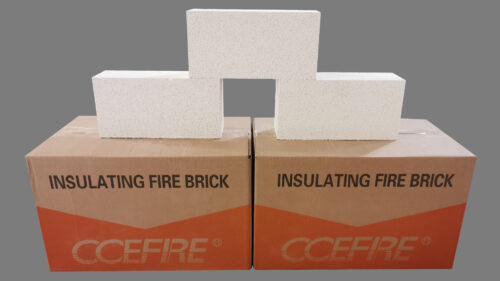Ceramic Fiber Board – CCEWOOL®
- 13 Oct, 2025
- Insight

In high-temperature industrial furnaces and heat treatment equipment, linings must not only withstand continuous thermal radiation but also resist furnace pressure fluctuations and hot gas erosion. If compressive strength is insufficient, boards may collapse, crack, or fail during long-term operation, directly compromising insulation performance and operational safety. Therefore, compressive strength has become a key indicator in evaluating whether ceramic fiber boards can ensure long-term stability.
Process Determines Strength: CCEWOOL®’s Unique Advantage
CCEWOOL® ceramic fiber board maintains a compressive strength of 0.3 MPa even at high temperatures, thanks to continuous optimization of its manufacturing processes:
High-purity raw materials: Selected alumina and silica with impurity levels below 1% reduce the risk of brittle fracture and enhance fiber toughness and strength.
Vacuum forming process: Ensures more uniform fiber distribution and controlled porosity, allowing the board to retain a stable structure under high-temperature compression.
High-temperature sintering reinforcement: Precisely controlled sintering strengthens bonding between fibers, improving overall load-bearing capacity.
Intelligent process optimization: The self-developed “Big Data-Driven Refractory Fiber Process Parameter Optimization System V1.0 ” enables real-time parameter control, ensuring uniform fiber distribution and layer bonding. This further enhances product consistency and compressive performance under extreme conditions.
Application Value of High Compressive Strength
Thanks to these advanced processes, CCEWOOL® ceramic fiber board maintains long-term structural stability under high temperatures:
Prevents collapse in furnace walls and roofs, extending lining lifespan.
Resists furnace pressure impact in backup layers, preventing structural loosening.
Maintains precise fit in complex equipment areas, reducing maintenance frequency and lowering repair costs.

Peru Customer
Cooperation years: 3 years
Ordered product: CCEWOOL® 2300 ceramic fiber board / 2600 ceramic fiber board
Product size: 25x1000x1200mm / 50x1000x1200mm
A customer from Peru has been purchasing CCEWOOL® ceramic fiber board for three consecutive years. The latest order included sizes 25x1000x1200mm and 50x1000x1200mm. Feedback shows that even under prolonged high-temperature operation and furnace pressure fluctuations, the boards demonstrated excellent compressive strength and stability, ensuring reliable operation of their high-temperature equipment.
Through the combined strengths of high-purity raw materials, vacuum forming, high-temperature sintering, and intelligent process optimization, CCEWOOL® ceramic fiber board sets the industry benchmark in compressive strength. It not only provides customers with more durable and safer insulation linings but also supports global high-temperature industries with long-term stability, energy savings, and efficient operations.



